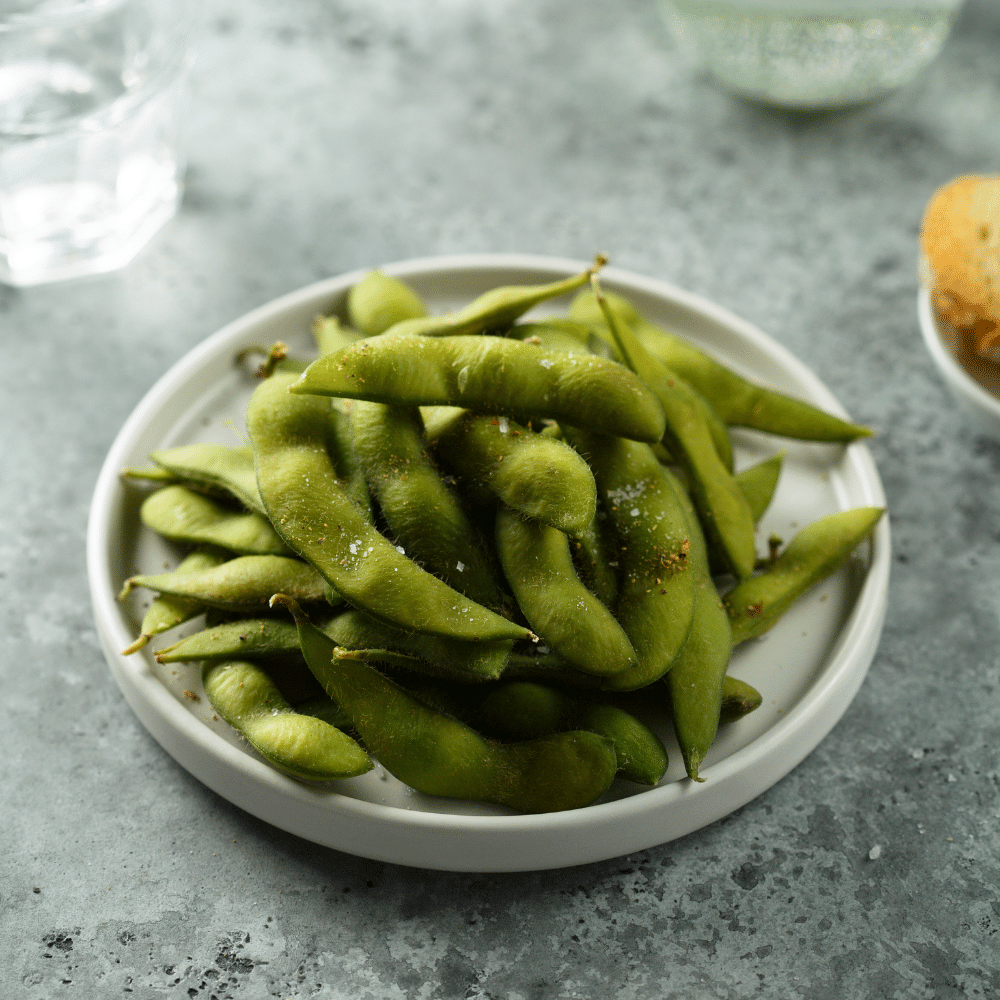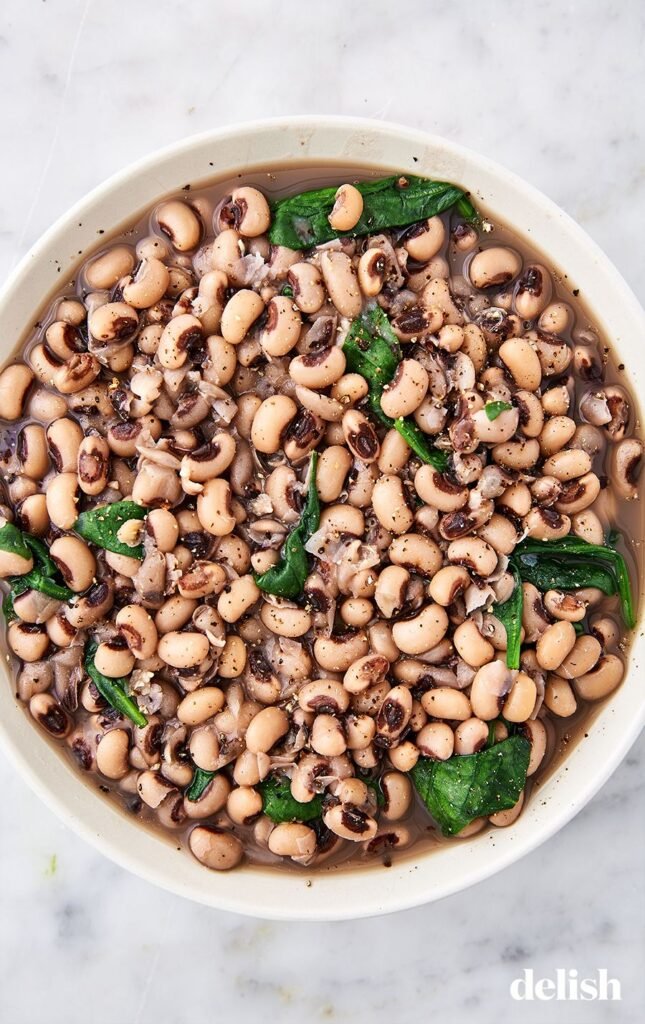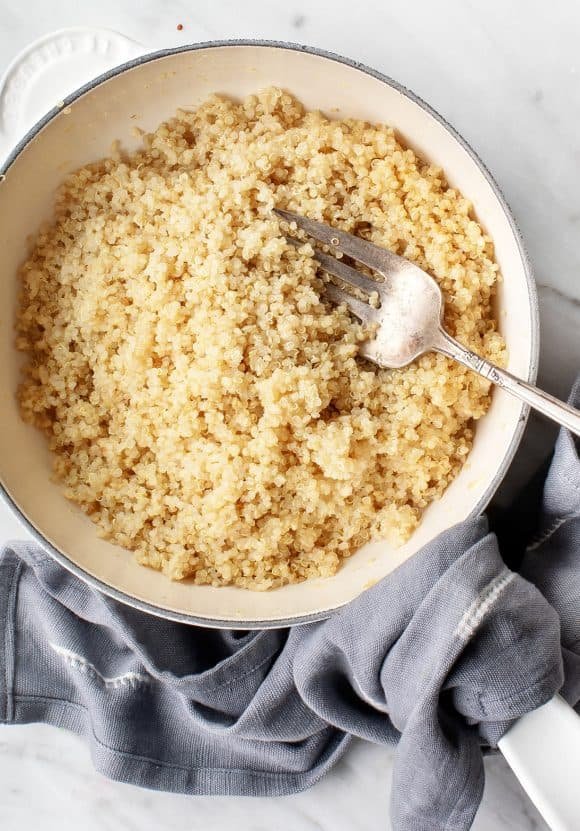Butter beans are a versatile ingredient that can be used in many recipes.
From soups and stews to salads and sides, butter beans add a creamy texture and subtle flavor to any dish.
However, if you don’t have access to butter beans or just want something different, there are plenty of substitutes out there.
In this article, we’ll explore the 10 best substitutes for butter beans so you can find an alternative that fits your taste preferences and dietary needs.
What Are Butter Beans?

Butter beans, also known as lima beans, are a type of legume that is native to Central and South America.
They have a creamy texture and buttery flavor when cooked, hence their name.
Butter beans come in two varieties: large white or speckled green-and-white.
The larger variety has a milder flavor than the smaller one, which is more nutty and earthy.
Butter beans can be eaten fresh or dried; they are usually sold canned or frozen in most grocery stores.
When cooked, they become soft and creamy with a slightly sweet taste.
They can be used in soups, stews, salads, casseroles, side dishes and even desserts!
Butter beans are high in protein and fiber while low in fat; they also contain essential vitamins such as folate and iron.
The 10 Best Substitutes for Butter Beans
Butter beans are a delicious type of legume that can be hard to find in some places.
If you’re looking for an alternative, here are ten substitutes that will still give you the same taste and texture:
1. Navy Beans

Navy beans, also known as haricot beans, are small white beans with a mild flavor.
They have a firm texture and hold their shape well when cooked.
Navy beans get their name from the fact that they were once a staple in the diet of United States Navy sailors.
Cooking With Navy Beans
The most common way to prepare navy beans is to soak them overnight then simmer them until tender.
This method yields creamy-textured navy beans that can be used in soups, stews, casseroles, salads, and more.
If you don’t have time to soak your navy beans before cooking them, you can use the quick-soak method or cook them in a pressure cooker for quicker results.
Recipe Ideas
- Classic Baked Beans – Combine soaked navy beans with bacon pieces and seasonings such as mustard powder and brown sugar for a classic side dish or main course.
- White Bean Soup – Simmer navy beans with chicken broth, onion, garlic and herbs like rosemary and thyme for an easy soup that’s perfect for lunch or dinner.
- White Bean Chili – Make chili even heartier by adding soaked navy beans along with ground beef or turkey breast chunks and diced tomatoes with green chilies for extra flavor.
- Three Bean Salad – Mix together cooked navybeans, chickpeas, and kidney beans with diced vegetables, an olive oil and vinegar dressing, and fresh herbs for a flavorful and colorful side dish or main course.
2. Chickpeas (Garbanzo Beans)

Chickpeas, also known as garbanzo beans, are legumes that have a nutty flavor and creamy texture.
They come in both dried and canned varieties, making them an accessible ingredient for any pantry.
Cooking With Chickpeas
Dried chickpeas need to be soaked overnight before cooking; however, canned chickpeas can be used right away.
Both types of chickpeas can be cooked on the stovetop or in a pressure cooker.
Once cooked, they can be eaten whole or mashed into hummus or falafel.
Roasted chickpeas make a great snack when tossed with spices like paprika and garlic powder.
Recipe Ideas
- Hummus
- Falafel
- Curried Chickpea Salad
- Roasted Chickpea Bowls
- Indian Chana Masala
- Mediterranean Quinoa Bowls with Feta and Olives
3. Cannellini Beans

Cannellini beans are a type of white bean that is native to Italy.
They have a mild, nutty flavor and creamy texture.
The beans are small and oval-shaped, with a light tan color.
Cooking With Cannellini Beans
These beans can be used in many dishes such as soups, stews, salads, casseroles, and dips.
They can also be mashed or pureed for use in spreads or sauces.
When cooking the beans from dry form, it’s best to soak them overnight before adding to your dish.
This helps speed up the cooking process and make them easier to digest.
Recipe Ideas
- White Bean Soup
- White Bean Salad
- Cannellini Bean Dip
- White Bean Casserole
- White Bean Hummus
- Roasted Red Pepper & Cannellini Beans
4. Great Northern Beans

Great Northern beans are a type of white bean that is medium-sized, oval-shaped, and creamy white in color.
They have a mild flavor and firm texture that make them ideal for soups and stews.
Cooking With Great Northern Beans
Great Northern beans can be cooked on the stovetop or in a slow cooker.
To cook on the stovetop, soak dried beans overnight then rinse them before cooking.
Add them to a pot with enough water to cover by two inches, bring to a boil then reduce heat and simmer until they are tender (about 1-2 hours).
For slow cooker recipes, add soaked beans to the slow cooker with enough liquid to cover plus an additional inch or so of liquid.
Cook on low for 8 hours or high for 4 hours until tender.
5. Borlotti Beans

Borlotti beans are a variety of legume, also known as cranberry beans or Roman beans.
They have a creamy texture and nutty flavor, with an earthy sweetness.
The outer skin is reddish-brown in color with speckles on the inside of the bean.
Cooking With Borlotti Beans
These beans can be cooked in several ways—boiled, steamed, baked or even slow-cooked over low heat for a longer period of time.
When boiling, it’s best to add some salt to the water to help preserve their color and flavor.
Once boiled, they can be added to soups and stews or mashed into dips and spreads.
For baking purposes, they need to be soaked overnight before using them in recipes such as casseroles or vegetable pies.
Common Uses
One of the most popular uses for borlotti beans is minestrone soup—a classic Italian dish made with vegetables and broth that can also include pasta or rice.
They are often used as part of a side dish like risotto or polenta too.
In addition to being served as part of main dishes, borlotti beans can also be enjoyed cold in salads when mixed with other ingredients such as tomatoes and onions for extra flavor.
6. Soybeans

Soybeans are a type of legume native to East Asia.
They have been an important part of the diet in China and Japan for centuries, and now they are grown around the world.
Soybeans can be eaten whole, or processed into many food products such as tofu, tempeh, soy sauce, miso paste, and more.
Cooking With Soybeans
Whole soybeans can be cooked like other legumes – boiled until tender and seasoned with salt or spices.
They can also be roasted in a dry pan on the stovetop until crispy.
Mature soybeans (edamame) can be added to salads or used as a side dish; they are often steamed before eating.
Tofu is made from curdled soybean milk; it is available in different textures depending on how much water has been pressed out of it.
Tempeh is made by fermenting cooked whole soybeans with a culture that binds them together into cakes; these cakes can then be sliced and fried or baked for use in dishes such as tacos or sandwiches.
Common Uses
Soybeans are used to make many foods including tofu, tempeh, edamame (green immature beans), miso paste (fermented bean paste), soymilk (made by grinding soaked beans and straining off the liquid), textured vegetable protein (TVP), and more.
They are also used as a meat substitute in many vegan and vegetarian dishes.
Soybean oil is also used to make margarine and other products.
7. Red Kidney Beans

Red Kidney Beans are a type of legume that is popular in many cuisines around the world.
They are medium-sized beans with a red skin and white interior, similar to kidney beans.
Cooking With Red Kidney Beans
Red Kidney Beans have a mild, slightly nutty flavor and can be used in a variety of dishes.
They are often cooked with spices such as cumin or chili powder to give them more flavor.
Red Kidney Beans can also be added to soups, stews, salads, burritos, tacos, or chili for extra protein and fiber.
They can also be mashed into refried beans or hummus for dips and spreads.
Common Uses
Red Kidney Beans are commonly used in Mexican cuisine as well as Indian dishes such as dal or rajma curry.
In the U.S., they are often used in Cajun cooking and Louisiana-style dishes such as jambalaya or red bean gumbo.
They can also be enjoyed simply boiled with salt and pepper for an easy side dish.
8. Edamame

Edamame is a type of green soybean that has been harvested before it matures.
It is usually found in the frozen section of grocery stores and can be eaten raw or cooked.
Cooking With Edamame
To prepare edamame, boil them for 5 to 10 minutes until they are tender but still have some bite to them.
Once cooked, you can season them with salt and pepper, or add other herbs and spices like garlic powder, cumin, chili powder, or curry powder.
You can also use them in stir-fries, soups, salads, and even smoothies.
Common Uses
Edamame is an incredibly versatile ingredient that can be used in a variety of ways.
It’s often served as an appetizer at Japanese restaurants with some salt sprinkled on top.
It’s also popularly added to noodle dishes like ramen and udon soup as well as rice bowls such as donburi.
Additionally, it makes a great addition to salads and wraps for extra protein!
9. Black Eyed Peas

Black-eyed peas are small, beige-colored beans with a distinctive black spot.
They are part of the legume family and have been cultivated for thousands of years in many parts of the world.
The plant is native to Africa but has spread throughout the world, and it is now grown in many countries including China, India, and the United States.
Cooking With Black Eyed Peas
Black eyed peas can be cooked in a variety of ways.
They can be boiled, simmered or pressure cooked on their own or added to soups and stews.
For a simple side dish, they can be cooked with garlic and onions as well as other vegetables like carrots or bell peppers. To add flavor to your dish you can also add herbs such as oregano or thyme.
Common Uses
In addition to being used as a side dish, black eyed peas are often used in salads or served cold with vinaigrette dressing.
They are also popularly used in dishes such as Hoppin’ John (a traditional Southern dish), succotash (a combination of corn and beans) and even fried rice dishes.
10. Quinoa

Quinoa is a grain-like seed that is native to South America.
It has been cultivated for thousands of years and was once a staple food of the Incas.
Quinoa is high in protein, fiber, and essential minerals such as iron and magnesium.
Cooking With Quinoa
Cooking quinoa is easy; it can be cooked on the stovetop or in a rice cooker.
The ratio of liquid to quinoa should be 2:1 (2 cups water for every 1 cup of quinoa).
Bring the liquid to a boil, add the quinoa, reduce heat to low, cover pot with lid, and simmer for 15 minutes or until all liquid has been absorbed. Let stand 5 minutes before fluffing with fork.
Common Uses
Quinoa can be used as an alternative to rice or couscous in salads or side dishes; it can also be added to soups and stews for extra texture and nutrition.
Try using it as a breakfast porridge by adding milk or nut milk along with sweeteners like honey or maple syrup plus cinnamon, nuts, fruits etc..
You can also use cooked quinoa in place of bread crumbs when making burgers or meatballs since it adds texture without taking away from flavor.
FAQ
What can I use instead of butter beans?
Cannellini beans or borlotti beans are great alternatives to butter beans in many recipes. They can be used in salads, with chicken or pasta dishes, and in soups and casseroles.
In addition, you can also use navy beans, great northern beans, or lima beans as a substitute for butter beans.
All of these beans can be used in a variety of recipes, from stews and chilis to salads and soups.
Are cannellini and butter beans the same?
No, cannellini and butter beans are not the same. Cannellini beans are white and have a slightly nutty flavor, while butter beans are larger and creamier in texture.
Both types of beans have a mild flavor, so they can be used interchangeably in many recipes.
Cannellini beans are a great substitute for butter beans in salads, with chicken or pasta dishes, soups, and casseroles.
They can also be mashed and spread on bread or used in dips. Butter beans, meanwhile, are best used as a side dish or in stews and casseroles.
Are butter beans and kidney beans the same?
No, butter beans and kidney beans are not the same. While both types of beans are highly nutritious and delicious, they have different texture, flavour, and looks.
Butter beans, also known as lima beans, white kidney beans, or broad beans, have a delicate, creamy texture and a mild, nutty flavour. In contrast, kidney beans have a robust, earthy flavor and a dense, firm texture.
Nutritionally, both types of beans are low in fat, cholesterol and gluten free. They are also rich in protein, fibre, iron, and B vitamins. So while they may look similar, butter beans and kidney beans are two different types of beans with their own unique flavour and texture.
Conclusion
In conclusion, butter beans are a delicious and nutritious legume that can be used in a variety of dishes.
However, if you don’t have butter beans on hand, there are several other options that can be used as tasty substitutes.
The best substitutes for butter beans are navy beans, chickpeas (garbanzo beans), cannellini beans, great northern beans, borlotti beans, soybeans, red kidney beans, edamame, black eyed peas, and quinoa.
Each of these legumes has its own unique flavor and texture and can be used to create delicious and nutritious meals.
Using a combination of these legumes is a great way to add variety to your meals and ensure that you never have to go without butter beans again.

The 10 Best Substitutes for Butter Beans
Ingredients
- Navy Beans
- Chickpeas
- Cannellini Beans
- Great Northern Beans
- Borlotti Beans
- Soybeans
- Red Kidney Beans
- Edamame
- Black Eyed Peas
- Quinoa
Instructions
- Pick your favorite substitute from the list above.
- Follow cooking directions for your selected substitute with the proper ratio of ingredients.
Jenny has always been passionate about cooking, and she uses her platform to share her joy of food with others. Her recipes are easy to follow, and she loves giving tips and tricks to help others create their own unique culinary creations.

